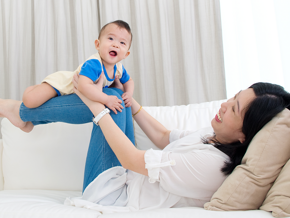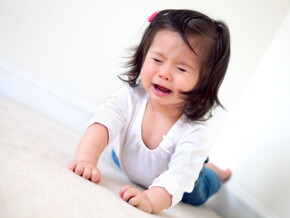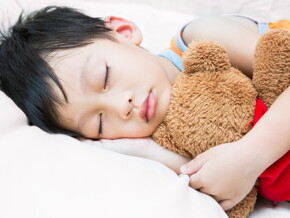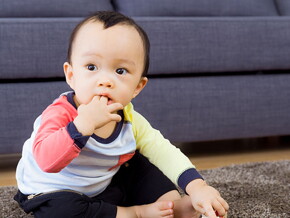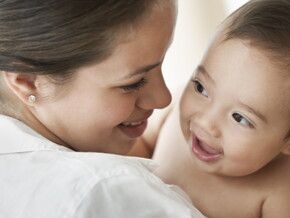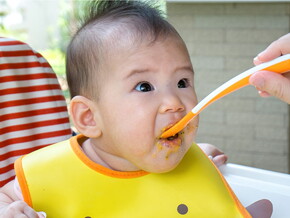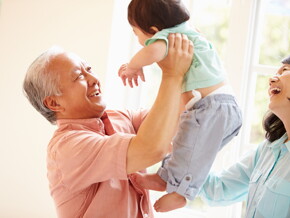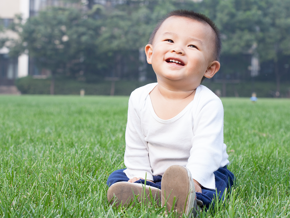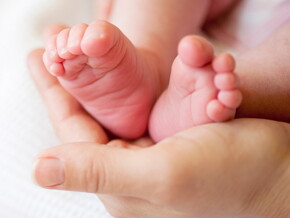
Baby Sleep
Much of your baby’s work during the first few months actually involves sleeping! Children can only develop optimally if they’re getting enough good sleep. Learn how the proper sleeping position can help ease your baby into sweet slumber.
For your baby, sleep is just as productive a time as wakefulness. It’s a time to rest and recharge, prepping that little body and mind to achieve new feats of growth and development every day.
Getting sufficient sleep means that your child can wake up to a host of benefits. For instance, growth hormones are primarily secreted during deep baby sleep. Just think - sleeping can actually help your baby grow taller! A well-rested child is also much more eager to learn and in a better mood to socialize with others.
Paying close attention to how children sleep may help ensure that they are getting enough rest for their developmental needs. Your child may appear to be sleeping well at first glance, but the wrong baby sleeping position could lead to harmful effects. If you know the best sleeping position for baby, you can help prevent breathing difficulties, which at their worst could lead to sudden death.
Get to know the proper sleeping positions below and how they can promote healthy sleep during baby’s bedtime.
Supine sleeping position
Supine means lying down on one’s back with the whole front body facing up. Being one of the most common and comfortable sleeping positions, it’s an excellent way for your baby to fall asleep.
Prone position – only when baby’s awake
The prone position – where baby lies tummy face down – is not recommended as a sleeping position because it may obstruct airflow to your baby’s lungs, which could lead to SIDS or Sudden Infant Death Syndrome. SIDS is also called crib death because it refers to babies 12 months or younger dying in their sleep without any sign or warning. To help prevent this from happening, sleeping on the back is the best sleeping position for baby.
When awake, however, and when you’re there to supervise, your child can lie tummy down in a prone position. Just make sure that the head is lifted and nothing is blocking baby’s nose or pressing into the chest. This position is good because it encourages muscle and eye development. It also takes pressure off the back of the head, which is usually lying flat on the bed.
Getting your child ready for sleep
Prepare for bedtime by wrapping your little one in a thin blanket up to the chest level, while ensuring that the cloth can’t cover the head while sleeping.
Some experts say that children should be held until they’ve fallen asleep. Others recommend placing babies in bed while they’re still awake to help them learn how to sleep independently.
As your baby grows, encourage a healthy bedtime habit of sleeping longer hours at night and taking fewer, shorter naps throughout the day. A regular sleeping pattern will not only help minimize middle-of-the-night crying moments, it will also help fuel healthy development during your baby’s precious waking hours.
Source:
https://www.startwell.nestle.com.my/tips-help-encourage-right-sleeping-position











